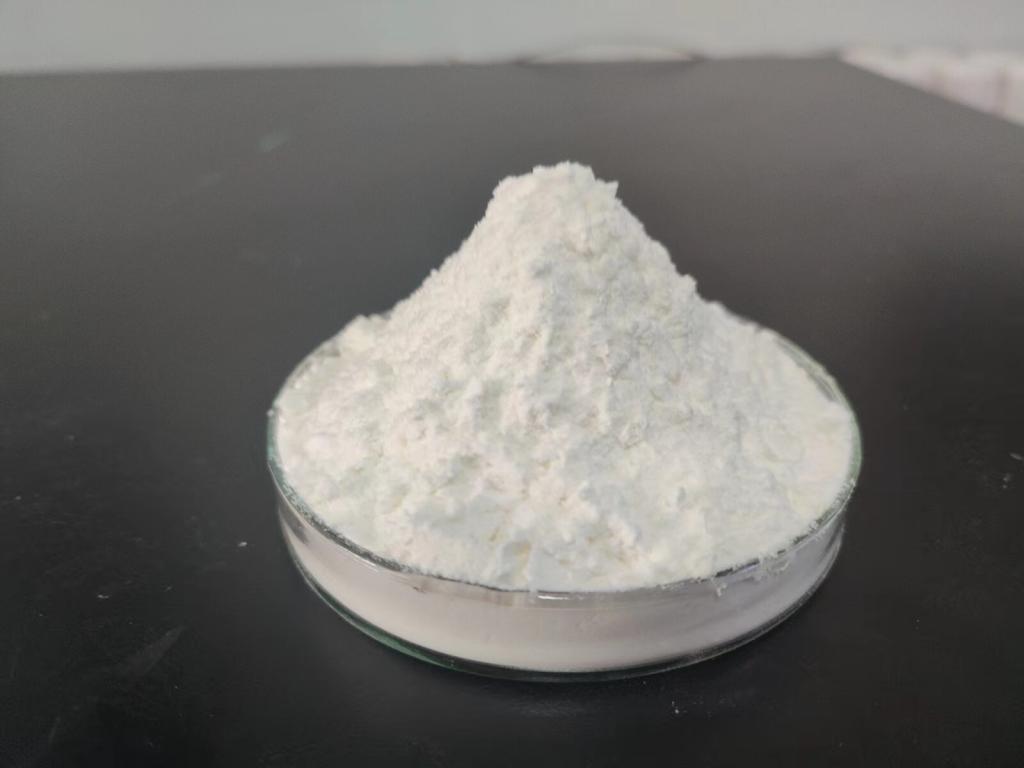Tel:+8618231198596

News
 CONTACT
CONTACT
 CONTACT
CONTACT
- Linkman:Linda Yao
- Tel: +8618231198596
- Email:linda.yao@dcpharma.cn
- Linkman:CHARLES.WANG
- Department:Overseas
- Tel: 0086 0311-85537378 0086 0311-85539701
News
Current Position:
Home >
News
>ε-Polylysine hydrochloride's ability to bind with proteins in biomedical research.
ε-Polylysine hydrochloride's ability to bind with proteins in biomedical research.
TIME:2024-04-03
Understanding ε-Polylysine Hydrochloride:
ε-Polylysine hydrochloride is a cationic polypeptide composed of multiple lysine residues linked by peptide bonds. It is produced through fermentation of Streptomyces albulus and exhibits potent antimicrobial activity against a broad spectrum of bacteria, yeasts, and molds. In addition to its antimicrobial properties, ε-Polylysine hydrochloride has been found to interact with proteins, leading to the inhibition of their activity.
Mechanisms of Protein Binding and Inhibition:
The ability of ε-Polylysine hydrochloride to bind with proteins and inhibit their activity is attributed to its cationic nature and polypeptide structure. When ε-Polylysine hydrochloride encounters proteins, it forms electrostatic interactions with negatively charged amino acid residues on the protein surface. This interaction may disrupt the conformation of the protein and interfere with its function, leading to inhibition of enzymatic activity or other biological processes.
Furthermore, ε-Polylysine hydrochloride may also interact with hydrophobic regions of proteins through non-covalent interactions, further stabilizing the protein-peptide complex and enhancing inhibition. These dual mechanisms of protein binding and inhibition make ε-Polylysine hydrochloride a versatile tool for modulating protein function in biomedical research applications.
Applications in Biomedical Research:
The protein-binding and inhibition properties of ε-Polylysine hydrochloride have diverse applications in biomedical research:
Drug Delivery: ε-Polylysine hydrochloride can be used as a carrier for drug delivery systems, where it binds with therapeutic proteins or peptides and facilitates their targeted delivery to specific tissues or cells. By encapsulating drugs within ε-Polylysine hydrochloride nanoparticles or conjugating them to ε-Polylysine hydrochloride-based carriers, researchers can enhance drug stability, improve pharmacokinetics, and increase therapeutic efficacy.
Protein Purification: ε-Polylysine hydrochloride can be employed in protein purification processes to selectively bind with target proteins and separate them from complex mixtures. Affinity chromatography columns containing ε-Polylysine hydrochloride ligands can be used to capture and purify proteins based on their interactions with the peptide, enabling high-yield and high-purity protein isolation for research and therapeutic purposes.
Enzyme Inhibition Studies: ε-Polylysine hydrochloride serves as a valuable tool for studying enzyme inhibition mechanisms and developing enzyme inhibitors for therapeutic applications. By interacting with target enzymes and inhibiting their activity, ε-Polylysine hydrochloride can elucidate enzyme-substrate interactions, identify potential drug targets, and facilitate the development of novel therapeutics for diseases such as cancer, infectious diseases, and metabolic disorders.
Biomedical Imaging: ε-Polylysine hydrochloride can be conjugated with imaging agents, such as fluorescent dyes or contrast agents, to enable visualization of specific proteins or biological processes in living organisms. By selectively binding with target proteins or cells, ε-Polylysine hydrochloride-based imaging probes allow researchers to monitor disease progression, track therapeutic responses, and investigate molecular pathways in real time.
Challenges and Considerations:
While ε-Polylysine hydrochloride holds great promise in biomedical research, several challenges and considerations must be addressed:
Specificity: Achieving specificity in protein binding and inhibition is crucial to avoid off-target effects and unintended consequences. Researchers must carefully design ε-Polylysine hydrochloride-based systems to ensure selective interaction with target proteins while minimizing interactions with non-target proteins.
Stability: The stability of ε-Polylysine hydrochloride-based formulations is essential for maintaining their efficacy and performance in biomedical applications. Factors such as pH, temperature, and environmental conditions can affect the stability of ε-Polylysine hydrochloride and its interactions with proteins, necessitating optimization of formulation parameters for desired outcomes.
Biocompatibility: Biocompatibility is paramount for ε-Polylysine hydrochloride-based systems intended for biomedical applications. Researchers must assess the cytotoxicity, immunogenicity, and biodegradability of ε-Polylysine hydrochloride formulations to ensure their safety and compatibility with biological systems.
Translation to Clinical Applications: While ε-Polylysine hydrochloride shows promise in preclinical studies, its translation to clinical applications requires rigorous evaluation of safety, efficacy, and regulatory approval. Clinical trials and regulatory submissions are necessary steps to validate the therapeutic potential of ε-Polylysine hydrochloride-based interventions and bring them to market for patient benefit.
Future Directions and Innovations:
Future research efforts in ε-Polylysine hydrochloride-based biomedical applications may focus on:
Enhanced Targeting Strategies: Developing strategies to improve the specificity and targeting efficiency of ε-Polylysine hydrochloride-based systems for precise modulation of protein function in disease states.
Multifunctional Platforms: Designing multifunctional ε-Polylysine hydrochloride-based platforms capable of integrating diagnostic, therapeutic, and imaging functionalities for personalized medicine and precision healthcare.
Biomaterial Engineering: Exploring the use of ε-Polylysine hydrochloride in biomaterial engineering for the development of tissue-engineered constructs, drug-eluting implants, and regenerative scaffolds for tissue repair and regeneration.
Therapeutic Applications: Investigating the therapeutic potential of ε-Polylysine hydrochloride-based interventions in various disease settings, including cancer therapy, infectious disease treatment, and regenerative medicine.
Conclusion:
ε-Polylysine hydrochloride's ability to bind with proteins and inhibit their activity offers exciting opportunities in biomedical research and therapeutics. By leveraging its unique properties, researchers can develop innovative strategies for drug delivery, protein purification, enzyme inhibition studies, and biomedical imaging. While challenges remain in terms of specificity, stability, and translation to clinical applications, ongoing research efforts hold promise for unlocking the full potential of ε-Polylysine hydrochloride in addressing unmet medical needs and improving patient outcomes.
- Tel:+8618231198596
- Whatsapp:18231198596
- Chat With Skype







